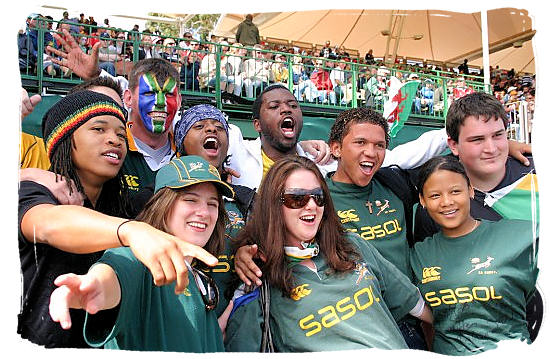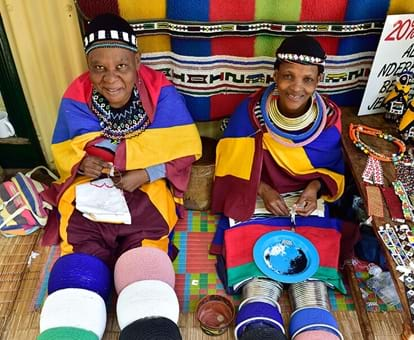The 45-Second Trick For South African Culture Today
The 45-Second Trick For South African Culture Today
Blog Article
Not known Incorrect Statements About South African Culture Today
Table of ContentsThe smart Trick of South African Culture Today That Nobody is Talking AboutSouth African Culture Today for DummiesTop Guidelines Of South African Culture TodaySome Known Details About South African Culture Today Getting The South African Culture Today To WorkWhat Does South African Culture Today Do?
A matter of value in Zambian towns is the passing away of enjoyed ones. All participants of the village put cash, time and effort together for the burial of the deceased.Songs and dance is a very important element of the Zambian culture. The various tribal devices have their very own dancing types; however, makishi is usual amongst all tribes.
Fascination About South African Culture Today
When it comes to music, drums are utilized the most, with a range of drumming events. In Zambia, majority of individuals are Christian; Protestant and Roman Catholic. There are tiny teams of Muslims and Hindus, with the remainder complying with regional indigenous tribal ideas.

South African heritage and society is greatly varied, and includes numerous various teams of individuals who each have their very own customs and beliefs. Having such a variety of individuals and cultures is what makes South Africa so unique. In the real feeling of the phrase, we are a rainbow country.
South Africa has about 3 hundred thousand Portuguese people living in it. Making it the 7th on the list of nations with the most Portuguese individuals in it outside of Portugal. Portuguese is not just a culture, yet it is likewise a language and a nationality. Portuguese individuals originate from the country of Portugal in Europe, however, due to Portugal (like lots of other nations in Europe) exploring the globe and conquering various other countries during the 15th 20th centuries, South Africa has what we call Portuguese South African's living in it.
The Facts About South African Culture Today Revealed
Among the popular features of the topography is a plateau that covers nearly two thirds of the facility of the nation. The plateau complex increases towards the southeast, where it culminates in the Drakensberg array, component of a cliff that separates the plateau from the coastal locations. The Drakensburg includes Champagne Castle, the highest height in the country.
The region north of the Witwatersrand, called the bushveld, slopes downward from east to west toward the Limpopo River, which develops the worldwide boundary. The western section of the plateau, the middleveld, likewise comes down towards the west and varies in elevation in between the highveld and bushveld. In between the Drakensburg and the eastern and southerly coast, the land comes down to the sea.
Nearer the shore there is a low-lying plain called the eastern lowveld. Southwest of the plateau the country becomes progressively much more dry, offering means to the hostile desert of the Great Karroo, surrounded on the east by the lower, much better sprinkled plateau of the Little Karroo. Separating the dry southern inside from the sandy littoral of the southern coast and West Cape is another range, the Langeberg.
The Buzz on South African Culture Today
The nation's racially, ethnically, and politically separated background has produced nationwide and subnational symbols that still operate as signs of the nation, and others signs that are accepted just by specific teams. The monuments to white inhabitant conquest and political dominance, such as the Afrikaner Voortrekker ("leader") Monolith in Pretoria and the Rhodes Monolith honoring the British colonial realm home builder and Cape prime priest Cecil Rhodes, remain sectarian icons.
The very first contemporary residents were the San ("bushman") hunter-gatherers and the Khoi ("Hottentot") individuals, who rounded up animals (South African culture today). The San might have existed for hundreds of years and left evidence of their visibility in thousands of ancient cave paints ("rock art"). Bantu-speaking clans that were the ancestors of the Nguni (today's amaZulu, amaXhosa, amaSwazi, and vaTsonga peoples) and Tswana-Sotho language teams (today's Batswana and Southern and Northern see here Basotho) moved below east Africa as early as the fifteenth century

Both former republics of the Orange Free State and Transvaal (South African Republic) were established by Afrikaner inhabitants that beat and dispossessed the Basotho and Batswana. Lesotho would certainly have been by force included right into the Orange Free State without the expansion of British security in 1869. The supreme marriage of the nation arised from the South African Battle (18991902) in between the British and the 2 Afrikaner republics, which minimized the nation to wreck at the start of the twentieth century.
Afrikaners traditionally considered themselves the only real South Africans and, while granting complete citizenship to all homeowners of European descent, rejected that standing to people of color up until the democratic shift of 1994. British South Africans preserve a feeling of social and social connection to Great Britain without deteriorating their identity as South Africans.
Indicators on South African Culture Today You Need To Know
The diversity and fragmentation within ethnic groups and the balance of stress between those teams during the twentieth century avoided interethnic civil conflict. While intergroup tensions over sources, privileges, and political supremacy remain, those problems are as likely to match Zulu against Zulu as Zulu versus Xhosa or African against Afrikaner.
From colonial India, British sellers and administrators brought the bent metal decorative roofs and slim lace work columns that still typify the terraces of cottages in communities and cities throughout the nation. Homes of worship contribute a vital architectural facet even in the tiniest communities. In addition to the skyrocketing steeples and timeless stonework of Afrikaans Dutch Reformed churches, Anglican churches, synagogues, mosques, and Hindu shrines give variety to the religious building scene.

Butchering and the brewing of standard grain beer are essential in safeguarding the participation and goodwill of the ancestors who are considered the guardians of good fortune, prosperity, and well-being. Indian communities maintain their indigenous cooking customs and use them on Islamic and Hindu routine and ritualistic events. Afrikaners and Coloured individuals gather at weekend breaks and special celebrations at multifamily bbqs called braais, where area bonds are enhanced.
Since this was the main financial business of both black Africans and white colonists, problem in between those groups centered on the ownership of grazing land and animals. In 1867, the biggest diamond deposits in the globe were found at Kimberley in the west main location. The riches from those fields More hints assisted fund the exploitation of the best gold reef worldwide, which was uncovered on the Witwatersrand in 1886.
7 Simple Techniques For South African Culture Today
This resulted in misconceptions and calculated misrepresentation in the ventures of white settlers and government officials with African principals during the early american period (South African culture today). In the facility of African books, some aspects of public and mainly "tribal trust" land tenure were maintained, and even in white rural locations, forms of common period were still exercised in areas with African neighborhoods
After the autonomous change of 1994, programs for land restitution, redistribution, and reform were set up, yet progression has been sluggish. The white minority still regulates eighty percent of the land. In the wake of agricultural land intrusions in Zimbabwe, Read More Here the Division of Land Affairs has actually vowed to speed land redistribution.
Report this page